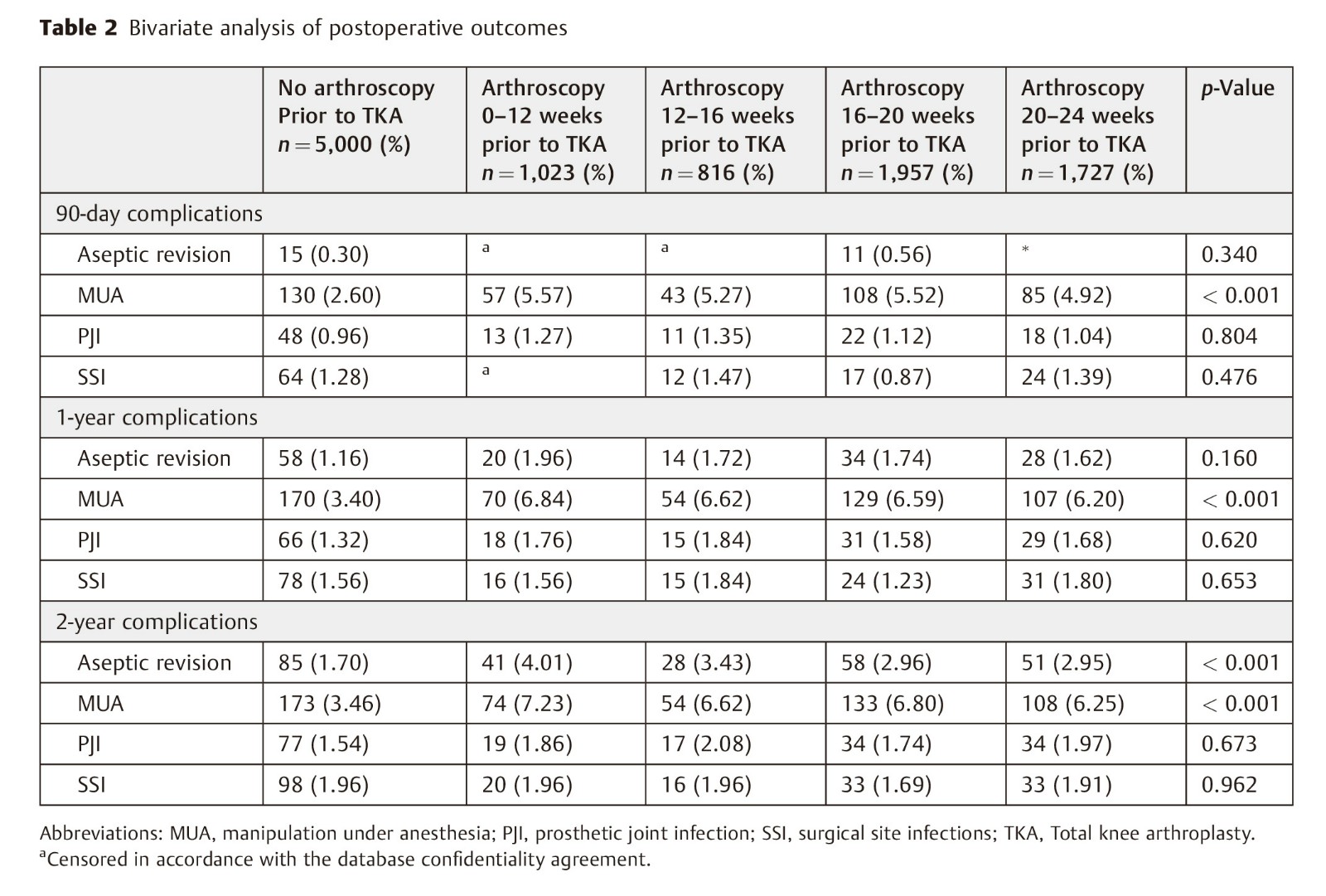
精选论文
Special Focus Section
Knee Arthroscopy Prior to Total Knee Arthroplasty: Temporal Relationship to Surgical Complications
Oliver C. Sax, Sandeep S. Bains, Zhongming Chen, Christopher G. Salib, James Nace, Ronald E. Delanois
Mechanical knee symptoms secondary to knee osteoarthritis (OA) may warrant knee arthroscopy (KA). Degenerative changes may progress and require a subsequent total knee arthroplasty (TKA). Recent studies have evaluated the timing of KA prior to TKA, associated a narrow interval with increased post-TKA complications. However, an updated analysis is required. We compared surgical outcomes in recipients of KA prior to TKA as stratified by four, time-dependent cohorts (< 12, 12 to 16, 16 to 20, and 20 to 24 weeks prior to TKA). We specifically compared: 90-day (1) manipulations under anesthesia (MUAs); (2) septic revisions at 90 days, 1 year, and 2 years; as well as (3) how various independent risk factors influenced the manipulations or revisions. We queried a national database for patients undergoing TKA. Patients who underwent KA with the following intervals: < 12 (n = 1,023), 12 to 16 (n = 816), 16 to 20 (n = 1,957), and 20 to 24 weeks (1,727) prior to TKA were compared with those patients who did not have a history of KA (n = 5,000). Bivariate analyses were utilized to assess 90 days through 2 years surgical outcomes. Afterwards, multivariate regression models were utilized to assess for independent risk factors. The unadjusted analyses showed an increase in MUA through 2 years among all the KA recipients (p < 0.001). Septic revisions and surgical site infections at all time points were not associated with any of the four arthroscopy time intervals (p > 0.476). The adjusted analyses showed an increased risk for 90-day MUA among all TKA cohorts (p < 0.001). Risk for septic revisions did not reach significance. Delaying TKA by 24 weeks in KA recipients was not associated with a decreased risk in septic revisions. However, there was an apparent risk of MUA at 90 days for all KA cohorts suggesting that waiting after KA before TKA makes no difference in MUA rates. These results update existing literature, may serve as an adjunct to current practice guidelines, and can contribute to shared decision making in the preoperative setting.

